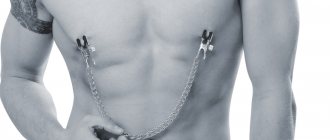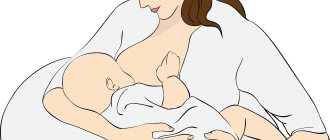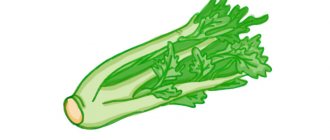Surprisingly, self-weaning is a rare practice even among natural parents. When I tell someone about the fact that I nursed my daughter for 4 years, I am considered an eccentric at best, and a monstrous slowdown at worst. It’s strange how many external assessments there are in this issue, although it essentially doesn’t concern anyone except the mother and baby and doesn’t seem to bother anyone. Having decided to go all the way with breastfeeding, you will go through many stages, about which I also wrote a separate post. But I decided to write about self-exclusion separately, because I realized that there are mothers for whom it is simply important to know that someone else has had this happen. It is for those few that I am writing.
Our introductory notes. Breastfeeding on demand in the first year
I really wanted to breastfeed, it was valuable to me. I have always believed that this is how a mother conveys heartfelt love to her child, this is a unique energetic component that cannot be transmitted in any other way, it is irreplaceable. I am not discussing the benefits of breast milk here; I think those who decide to read all this know very well about it. My first daughter, Zabava, was born at home and we gave her a kiss immediately after birth. On the third day, my daughter’s appetite awoke and she nursed from 8 a.m. until 3 a.m. the next day almost without interruption (later I learned that this day is called “milk order day”). This was the only day when I had cracks on my nipples, and from then on we managed “without injuries.” I had no complications after childbirth. There was a lot of milk, it flowed from the breast so that I could, by pressing on the breast, pour it out like a fountain a meter ahead. However, until now I have never pumped (I didn’t have to). It was enough for the daughter (and now the son) to wrap her lips around her breast and press on it, and then try not to choke. Milk flowed especially heavily in the first three months. I still didn’t really understand what lactostasis was, my daughter calmly sucked everything out, the excess milk in the other breast just drained (I put a diaper on her). Tidal feeding was established quickly, and the daughter always suckled with excellent appetite. She always received breasts on demand. This meant in her case almost every hour during the waking period, once every two hours during the nap periods and 3-4 times during the night. My daughter slept with me and I learned to breastfeed her almost without waking up, so night feedings never burdened me. My daughter fell asleep at night exclusively on her chest. Laying down took 30-40 minutes. I almost never had to get sick. After evening exercise, it was enough to “give my breasts out”, get comfortable and just be with my daughter or read a pleasant book. It gave me pleasure and joy. The daughter did not receive complementary feeding or supplementary fluids at least until her first tooth appeared (about 7 months). Subsequently - only pedagogical complementary feeding until about a year. We traveled a lot, so we maintained maximum breastfeeding density. By the age of one, my daughter had tried all the foods that I ate and began to eat in edible quantities. However, even at one year old, breast milk was the main component of her diet; she could easily skip any meal and instead hang on to her breast longer, which was enough for her.
Emergency weaning of a baby
Weaning children under one year of age from their mother's breast is permitted only under strict indications. These include:
- Purulent mastitis or inflammation of the mammary glands
- Open forms of tuberculosis
- Syphilis
- Oncological pathologies requiring immediate treatment
- Decompensation of chronic diseases of the kidneys, liver, or cardiovascular system, in which breastfeeding can threaten the life and health of the mother
- Diabetes.
Breastfeeding should not be started if you have HIV infection, as the virus is transmitted through milk. Emergency weaning can be temporary or permanent. If the mother is acutely ill and cannot feed the child due to the medications she is taking or the danger of infecting him, she can express milk during the period of illness. Expressing will allow you to maintain lactation and resume feeding in the future. It also reduces milk stagnation and serves to prevent mastitis and lactostasis.
See also:
How to get rid of breast milk safely Stopping lactation
How to stop breastfeeding a child Termination of lactation
How to wean a child from breastfeeding correctly Termination of lactation
To reduce lactation during emergency weaning, doctors recommend that mothers limit drinking to 500-700 grams per day, if this does not harm their health. For many infections, fluids should not be restricted because they help remove toxins from the body. If the mother does not intend to resume breastfeeding, milk should not be expressed completely, only to relieve tension in the chest. It is not recommended to tie the breasts; this interferes with blood circulation, leads to stagnation of milk, and increases the risk of inflammation.
If lactation cannot be stopped using natural methods, special medications are prescribed. After all, gradual weaning in an emergency situation is unacceptable. Before weaning your baby from breastfeeding for urgent reasons, consult your doctor. Ask: “Can I resume feeding, or should I stop completely.” In many cases, there is a chance to maintain lactation. The main thing is to make the right decision together with the doctor, which will benefit the baby.
4-5 months. "Forays" to work
When my daughter was 4-5 months old, I had to read a course of lectures. Lectures were paired for 3 astronomical hours, approximately once or twice a week. With my dear, my “going out” would have been 5 hours, which was completely unacceptable for my daughter. At this age, the comfortable feeding interval during the waking period was about 1.5 hours. As a result, the three of us went to lectures, with my mother and daughter. I fed my daughter in the car before the lectures started, then I went to work while my mother was walking with Zabava. During the break, I went out to see them, I had 15 minutes to feed, after which I returned to the classroom to lecture the other half, and my mother continued her walk with Fun. One day after feeding Zabava began to cry and lose sight of me. I decided that this was too much for me, so I wrapped her in a sling and gave the second half of the lecture in the sling. The fun fell asleep the minute I wound it up, but the listeners were very surprised (these were adults studying in the MBA system). It seems that this was the most surprising thing they had during their training, at least their eyes were like that. Nevertheless, we coped with the course of lectures.
Breastfeeding at 1-2 years. We grow baby teeth together.
At least until 1.5 years of age, breastfeeding still formed the basis of our diet. I was very loyal to feeding my daughter “adult food”: eat what you want and as much as you want (there was no sweets in my diet, but they were in the house, it was “daddy’s food that you and I don’t eat”). I allowed my daughter not to eat anything at all if she didn’t want to. As a result, the daughter grew up to be a great gourmet , compared to other children. The range of foods she tried or ate was wider. It was seafood, dairy products, all vegetables and fruits, all cereals, meat, fish. Of course, since food was a pleasure for her daughter, she never felt forced to eat it. She had a good appetite and never suffered from allergies or poisoning (because she could smell low-quality foods a mile away). In one or two years, despite living in the country in the summer, we did not catch any parasites. I still (and until the end of feeding) lived with my daughter in a feeding regime on demand. But there is one caveat. If you feed a baby in public, everyone looks at it loyally. But if you are feeding a grown child, there may be sidelong glances. Therefore, nursing clothes became the main thing for me. Besides food, breastfeeding was a powerful factor in emotional recovery . I never knew when my daughter would get tired or hurt herself during a walk and would run “to the titus” to rest or escape. Therefore, just in case, you always had to be in a dress or T-shirt “with a secret.” To improve the on-demand regime, I decided to read Irina Ryukhova’s book “Your Baby is Over a Year Old.” This is the first, and probably the main thing I read about GW. By the way, the book did not answer the question of how to make breastfeeding by my 2-year-old more civilized and agree that we do this at home and not in public. But she opened up many other amazing things for me. After reading about the benefits of long-term feeding , I decided that I would not wean at all, that we would feed “until the victorious” end, whenever and however it happened.
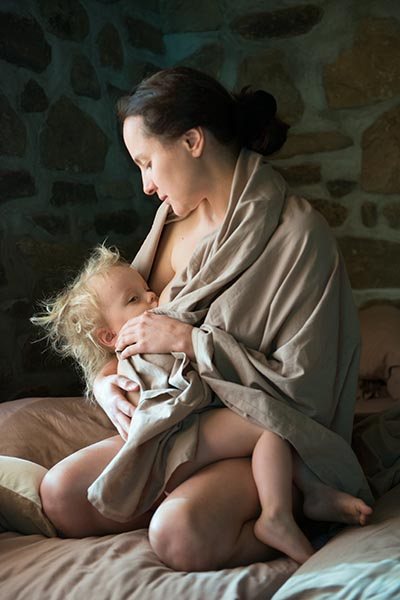
My daughter grew her first tooth at 7 months, and her last 20th tooth at 2 years and 8 months. And this is my own criterion, when there is no physiological need for breastfeeding, when the last tooth grows. Not just because you're providing nutritional support for your baby. But also because you have a powerful tool to relieve tension and stress from teething, including when traveling. With all the baby teeth, my daughter and I never had sleepless nights. She just hung on her chest these nights, but she slept (during the day she hung in a sling or in a backpack, and, as a rule, she also slept). Several times it happened that the tooth moved so that she could not suck (we are talking about the most intense hours). That's when it really got stressful. And she rewarded herself for him, sucking more before and after. And she recovered quickly.
Self-weaning from breastfeeding: when and how it happens
Self-weaning from breastfeeding is a situation when the child himself refuses the breast, forgets about it, due to the fact that he has simply grown up. He has other interests and a different level of relationship with his mother. He doesn't need the breast to fall asleep, calm down, or make sure his mommy loves him. Self-weaning occurs at different ages, usually between two and three years, closer to three, but quite often later.
So what is self-exclusion?
Breastfeeding should continue as long as the baby needs it. And this necessity is primarily psychological. Self-weaning is a refusal to breastfeed on the initiative of the child himself.
There is no term “self-excommunication” in foreign literature. There they talk about weaning on the initiative of the child. Our definition word takes the mother beyond the scope of the process.
But it is necessary to understand that two people are involved in the breastfeeding process. Moreover, one of these people is an adult. An attentive mother usually sees perfectly well when the baby wants to eat or go potty, is tired and practically falls asleep, or can’t find anything to do with himself and is bored. And she understands these states even better than the child himself. The baby may get too busy playing and not have time to run to the potty or become very tired and then have difficulty falling asleep. And it is in such cases that you need the help of the closest adult - your mother.
Gradual cessation of breastfeeding is a similar situation. The child is ready to stop breastfeeding, but the mother must understand that it is time to stop breastfeeding. And it is she who must take certain actions that help, and not hinder, the baby. Just like a mother, seeing that a child is yawning, will begin to prepare him for bed, read a fairy tale, sing a lullaby and will not start noisy games with him.
No one expects a child to learn everything on his own. Conditions are created for the baby so that in due time he learns to sit, crawl and walk. They show how to do it and, if necessary, perform exercises with it. A language environment is created for the child to learn to speak. They give him new food appropriate for his age. They don’t expect him to ask to go potty if he’s never seen one before. The same goes for breastfeeding.
But at the same time, it is useless to teach a six-month-old baby to walk or ask to go potty. He's not ready for this yet. And the parents’ insistence will only ruin the nerves of the baby and themselves.
Indicators of readiness for self-weaning
- The baby hardly wakes up at night to suck.
- Understands what “wait” means.
- Able to cope with stress and calm down without using the breast.
- He can fall asleep during the day without a boob and without his mother at all, but with his grandmother, nanny or dad.
- Has a fairly wide range of interests. He enjoys communicating with other relatives and friends, and not just with his mother.
- He can spend the whole day without his mother.
The baby stops sucking the breast, but does not stop loving it. He is calm about the sight of breasts that he may accidentally see. Doesn't try to touch her, but may want to stroke or kiss her.
Self-weaning is not a situation when a mother shows her child that she does not want him to suckle. If a child is constantly told that breastfeeding is not good, then he will, of course, refuse it. But this does not mean at all that this is the baby’s need.
But at the same time, the mother can set some boundaries. This is absolutely normal for a three year old child. After all, no one will allow him to jump onto the roadway just because traffic is natural for children. You can also run in the yard. And regarding breastfeeding, you can, for example, agree with the child that he receives breasts only at home, and not in any place where he wants.
It is even better to avoid situations where the baby asks for the breast too often. For example, he is bored. So isn’t it better to keep a three-year-old child busy with something useful and interesting than to drown out boredom by sucking? This is not a baby anymore.
But in the morning, in a half-asleep state, it is quite possible to let him suck. It’s so good to feel a warm and caring mother nearby. And the mother usually enjoys these moments. Very soon your son or daughter will jump up in the morning and run to the toys. And he will never be little again.
But too close communication between an older child and his mother interferes with his development. The baby does not want to leave his comfort zone. It’s so nice to be close to your mother, and when problems arise, instead of solving them, suck your boobs. But the obsession with mom must be eliminated. Otherwise, you may not only not wait for self-exclusion in an adequate time frame, but also interfere with overall development. Yes, of course, there are no adults who suck breasts. But the child’s social qualities, his ability to communicate with different people: children and adults, must be formed in the optimal time frame for this.
The mother needs to gradually push the baby to communicate with other people and create conditions for this. It is very useful to go to various developmental classes, it is better if they are group. You can send your child to kindergarten for half a day and hire a nanny. Frequent visits and games on the playground also work well.
And even while the child is with his mother, you can come up with many different interesting activities. Reading books, playing at home and outside, developing activities with mom, going to the park or swimming pool together - all this is very interesting and distracts from the breast.
GW, especially after a year, is also a method of education. One of the main tasks of a mother is to correctly set boundaries for the child. Even though he is still small, he should learn to see and respect the interests of other people, and not just his own, already at this age. And the mother is the first person who must show that she has her own interests, which may not coincide with the desires of the child - set boundaries.
In relation to breastfeeding, this may be the installation of a certain application regimen after a year. For example, before and after dreams, at night and if something happened to the child, to calm him down. It is unacceptable when a big child runs up to his mother in public and begins to lift up her clothes. And the mother must set an appropriate boundary: breastfeeding on the street is not allowed. This is very useful for the child. After all, in later life, everyone around them will have their own interests, and this state of affairs should be normal for a child.
Before a child refuses breastfeeding, he must learn to cope without his mother. Until two years, you don’t have to do anything special. Just don’t sit at home, but provide yourself and your child with sufficient communication with other people. But after two years, the ability to cope without a mother becomes a necessity. At this age, the mother needs to regularly leave the baby in the care of others for half a day or even a whole day.
And when closer to three years of age, plan a smooth weaning. There is no need to rush. The smoother the process, the better for both mother and child. The baby needs time to learn to be comforted, to show love to his mother and to receive her love without the use of the breast. And the mother needs this smoothness so that the breasts have time to adapt to smaller amounts of milk. This way you can avoid various problems such as lactostasis.
Classic self-weaning scheme
Self-weaning usually goes something like this:
- Feedings before naps are the first to go;
- then after a nap;
- then feedings disappear at night;
- and morning applications are delayed the longest.
This is due to the development of the child’s psyche.
During daytime feedings, consciousness is actively working, which is well developed by the age of 2.5 years. The child is already capable of logical thinking, can compare different situations and is able to understand that not all of his desires are fulfilled immediately. And some are not implemented at all because they violate the interests of other people. But night feedings lie in the realm of the unconscious. Even their number greatly depends on the general psycho-emotional state of the child. If his condition is characterized by increased anxiety, if the day has been tense, then the baby’s sleep will be restless, and he will wake up several times a night and put to the breast more often. Therefore, night feedings are not a child’s whim, but his urgent need. And she must be satisfied.
But here, of course, you need to look at the behavior of a particular child. If the baby sleeps all night without waking up, then there is no need to wake him up to feed him. But if a child sleeps restlessly, often wakes up, cries, demands the breast, and cannot be calmed down in any way, then night feeding is still necessary for him. And mom needs to find a way to save them.
How not to wean a baby
Our culture has developed well-known, but completely incorrect, methods of weaning. They are recommended by mothers, grandmothers, friends, and sometimes even doctors. But such methods cause irreparable harm to the child’s psyche, since the most important connection for any child – with the mother – is destroyed. Let's look at several of the most common incorrect techniques.
Separation from mother for several days
In practice, either the child is taken to the grandmother for a few days, or the mother leaves, leaving the baby with the father, grandmother or nanny. For a child, especially one who has always been with his mother, this is a severe psychological trauma. He loses not only his breast, but also his mother. And this greatly influences their subsequent relationships, as well as the child’s ability to establish lasting emotional connections with other people in the future. That is, this method of stopping breastfeeding subsequently creates problems in family life for a person who has become an adult.
Lubricating the chest with mustard, etc.
Let's look at this method from a child's point of view. Mom’s breast, which gives delicious milk, where you can warm yourself so sweetly, so reliable that you can always calm down with her, suddenly becomes so bitter that tears flow from it. If even she can change so treacherously, then what can we expect from the rest of the world. And the child loses trust in the breast, and in the mother, and in the whole world. And it’s not easy for him to live with this later.
Weaning in one day
The decision at some point to never breastfeed again is usually made by mothers who are tired of too frequent latching by their already quite large son or daughter. It is clear that the baby himself is not ready for weaning, and it cannot pass painlessly. Parents will have to endure hysterics and sleepless nights with a constantly crying child. Isn’t it easier to timely and gradually transfer the baby to the breastfeeding regime, which suits both: mother and child? And of course, choose age-appropriate activities for the grown-up person.
Let us summarize the main signs of self-exclusion:
- Occurs on the initiative of the child, i.e. It is he who no longer needs the breast, and not the mother, for some reason, who cannot or does not want to feed anymore.
- Mom, as an adult, reasonable person, helps the child fulfill his desire.
- The child still has tender feelings for the breast.
The process of gradually tapering off breastfeeding, when the child is ready for it, is usually painless. You just need to listen carefully to the baby and not forget about your interests.
AmyMama.ru
Feeding at 2-3 years. Emotional factor.
By this time, most of our friends had already weaned their babies from breastfeeding. Some easy, some with struggles and a sense of loss. I understood that my daughter’s emotional attachment to tita is now very strong and excommunication would definitely cause more losses than benefits. For her, it will create an unjustified precedent of loss. For me, it will make my bedtime routine more stressful, especially during the day. And it will complicate our joint travels, of which there were quite a lot during this period. After all, on the way I could just breastfeed and rest. If I didn’t want this for some reason, I could give my daughter milk with a straw. At times she began to prefer it, but not at night. Like most children who were fed for a long time, Zabava loved any milk very much (her favorite animal at that age was definitely the “cow”). A supply of fruit also helped along the way. But there was always a “backup option”. I noticed that weaned children at this age look and act more mature. There was something completely unique and childlike about my daughter, in the way she, with her perfectly developed speech and way of reasoning, suddenly turned (in a matter of minutes) almost into a baby. And, if the eyes of unkind people saw infantility in this, I saw the need for protection and rest in a very small child, who, having shown this “babyness” for a few minutes, rewarded me with greater autonomy and calmness at other times. After kissing for a while, the daughter went on to calmly explore the world.
Self-weaning from breastfeeding
Self-weaning is a situation where a baby simply outgrows his need to breastfeed and simply forgets to do so.
A child outgrows breastfeeding in the same way that children outgrow the need for frequent naps and begin to sleep once a day, and then do without naps at all;
how children outgrow diapers, and then the potty, and begin to use the toilet on their own; how children outgrow co-sleeping with their mother; how children outgrow the need to be fed, clothed, carried..., etc. Usually, self-exclusion is associated with the fact that the child has matured enough, mentally and morally strengthened, has become more stress-resistant, and has acquired many interests in life besides mother and breast.
That is, self-weaning is NOT a situation when a child deliberately refuses the breast with the words: “I don’t need it!”
Also, self-exclusion is NOT a situation when a child is systematically forcibly limited in sucking, accompanying the sucking with some negative comments and in every possible way demonstrating to the child that the mother does not want him to suck, or that she does not like it... and the child begins to act as His mother expects him to do so and refuses to breastfeed.
On the contrary, self-weaning is a situation when a child still has tender and joyful feelings for the breast, and he can happily run to his mother’s breast, accidentally seeing his mother’s bare breasts after a shower, and want to kiss, stroke the breast or something like that, but he no longer needs to actually suck for comfort or anything else. But sometimes a child may remember the breast and want to attach to it, but no longer “really” sucks, as it did during infancy...
Natural self-weaning is possible at the age of 4.6-5 years, when the child’s brain is sufficiently mature and the child almost never wakes up at night or in the morning to suck; when the child already understands what it means: “to wait” and what it means: “not now”, and he has the ability for some logical and slightly abstract thinking; when the child learned to calm down and cope with stress in other ways than breast jelly; when the child spends enough time not only with his mother, but also with other relatives, etc.; and when he has an interesting, active life full of events and responsibility... The child must be somewhat prepared for self-exclusion, that is, he must have his own concept, acquired through personal experience (not imposed), that he can spend the whole day without his mother; that you can take a nap during the day without breastfeeding or without your mother at all; that you can read a book not only with mom, but also with dad, nanny, grandmother, etc. Waking up in the morning, the child is immediately busy with something interesting that awaits him today, he strives to jump out of bed and run to play, where - go, etc., and not lie around with a sleepy mother under your chest.
In a situation where the mother and the child spend most of the time one-on-one, and also if the child is anxious, sick or experiences frequent stress, for example, in the background of kindergarten..., self-exclusion will have to wait a long time, but. In a situation where the mother and the child spend most of the time one-on-one, the child becomes to some extent fixated on the mother, and then he tends to return to the familiar, comfortable one - the breast, instead of moving somewhere further. Therefore, mothers who find themselves in such a situation will need to take active steps in order to switch the child from themselves to the world around them (exception: if the child is anxious, painful or experiences frequent stress, for example, in the background of kindergarten... - in this case the mother’s closeness is necessary for the child to establish a healthy psyche) - that is, to push a little towards weaning: going to educational activities, half a day in the garden, a babysitter, mutual nannying, frequent visits to different places where the child will see other children and communicate with others people, not only with the mother... Perhaps various tricks will be useful to distract the child from hanging on the chest, if he is prone to this - play more, read some books, take more walks, go somewhere together to the pool, to some classes : joint or for the mother, where the child can be present, and the mother is actively busy, etc.
And it is important to always remember that breastfeeding is a very active way of raising a child. Of course, the mother strives to satisfy the child’s needs, but not to the detriment of herself. If the mother has a clear sense of her own, healthy boundaries, then parenting and breastfeeding comes down to the fact that the child learns to respect the interests of other people, and not just strive to satisfy his own. For example, after the age of 2.6 years, a mother can set the following boundaries of breastfeeding: sucking before sleep and after sleep, at night, and for calming, if something happened to the child - he got scared, hurt himself, was very tired, sick, the child was hungry, and There is no way to feed him at the moment, to relieve stress after kindergarten... And breastfeeding can also help a lot on the road, for example during a flight - on an airplane at altitude his ears can get blocked, sucking on the breast helps to avoid this.
Preservation of breastfeeding for up to 3-4.6-5 years and longer, the so-called long-term feeding, does not at all imply round-the-clock or daytime (in case the child is already feeding little or almost not at night) hanging on the chest. If a completely prosperous and healthy child, outside of a stressful situation at the age of 3-4.6 years, tends to “hang” on the chest, he is most likely bored, there is little incentive and interesting activities around, so he needs to work on diversifying his life, making everyday life more interesting. dynamic and active. It is important that the child still learns to remain without his mother before we talk about completing breastfeeding and weaning.
My personal opinion: a child up to 4.6-5 years old can be fed and not particularly worried, provided that the point about active life and socialization is observed - there is sufficient contact with other children and people, as well as provided that the child is sufficiently stress-resistant and healthy to The mother herself did not have the feeling that the child was fixated on her. And after 4.6 years, introduce some restrictions, organize absences for half a day or a whole day, and after 5 years, if the child continues to use the breast, begin to plan a smooth, gentle weaning from the breast
So why exactly 4.6-5 years, and not 1-1.6-2 years? In addition to all of the above: - the immune system develops up to 4.6-5 years; - the nervous system develops up to 4.6-5 years; - by the age of 4.6-5 years, the sucking reflex fades; - up to 4.6-5 years, the brain grows by 95%; ... Hence, co-sleeping with a child continues until 4.6-5 years:
https://www.baby.ru/blogs/post/184905245-32216313/
, i.e. until complete self-weaning. In distant pre-Soviet times (before 20-30), women breastfed until 4.6-5 years old and this was completely normal. In all children's clinics there were posters promoting long breastfeeding up to 4.6-5 years. And everyone walked around like heroes...
https://www.baby.ru/blogs/post/268891140-32216313/
In the modern world, unfortunately, many mothers believe that IV/SV is better than breastfeeding, and with RD they immediately put the child on formula; Many mothers believe that breastfeeding until 3 months. enough, some believe that up to 1-1.6 years of GW is enough... (all these are the costs of civilization + side effects of Soviet and post-Soviet times, as everyone knows in that period of time there was no GW, now GW is gradually being revived...), and someone feeds until self-weaning...
In co-sleeping - similarly - some with RD put the child in a separate crib or even a room, while others sleep with the child until breastfeeding is completed, and longer... Often, when I talk about this, in response I hear: - “Yes, it won’t be possible to raise hero, because of our disastrous ecology...”
Yes, ecology is no problem for us! But ecology, like wars, like natural disasters, epidemics... do not depend on us personally. This is a factor beyond our control, here we are completely powerless, and we must take care of what depends on us, what is achievable for us, and follow it. GW, like co-sleeping, PP... depends on us and is absolutely achievable for us, if we have the desire... This is what we should direct all our guts to: give the child
everything we can do is the best... breastfeeding and co-sleeping are the best things a mother can give to her baby.
—-
Bottom line: the key to healthy self-weaning is an active, interesting life between mother and child, psychological comfort, a warm, healthy atmosphere in the family, the attention of other relatives to the child and their active participation in the affairs and life of the child. If your child is under 4.6-5 years old and has not given up breastfeeding on his own, use the soft weaning method. If, with gentle weaning, the child cannot be weaned from night feedings for a long time, you can use the method of abrupt weaning or the method with barmalei..., provided they sleep together:
https://www.baby.ru/blogs/post/268561780-32216313/
, but leave the method with barmaley... as a last resort, try to do without it, because methods with barmaley... will make the child timid and unsure of himself in the future. —- Do not confuse self-weaning with breastfeeding! https://www.baby.ru/blogs/post/195389971-32216313/ If you refuse breastfeeding, during breastfeeding, the baby begins to behave unusually - worries, has trouble latching on to the breast, may cry or arch at the breast, may prefer feeding only in a certain position or to feed only from one of the breasts or even takes only a bottle... If you refuse, you usually need to look for the roots deeper - in the violation of the relationship between the couple: “mother-child”. With the help of refusal, children show their mother either their distrust of her, dissatisfaction with something, or this is a manifestation of stress that the child cannot talk about due to his age. This can happen with: - a change of place of residence, - frequent quarrels between parents and household members, - a mother’s rude attitude towards the child, - the child’s loss of trust in his mother, - pacifiers and bottles - they are easier to suck than the breast and the child quickly gets used to them, - abruptly and incorrectly started massages or gymnastics, - if the mother pays little attention to the baby, - when sleeping separately, - changes in the taste of milk, - incorrect attachment to the breast, - when diving and swimming incorrectly, during which the child experienced fright, - when the appearance or disappearance of family members, the passage of strangers; - If a mother ignores her child’s needs and does not respond adequately to his signals: she goes to work, does not breastfeed on demand, ignores his cries or signals, does unpleasant things to him (especially psychological and medicinal), - all this and much more. provokes refusals. The baby seems to be “offended” by his mother, the psychological connections between them are disrupted, and the most possible and noticeable way to go on strike is to refuse the most basic thing - food! Also, refusal to breastfeed can be associated with illnesses of the baby, for example: concussion, poisoning, otitis media, sore throat, runny nose, fever... So we have completed our breastfeeding, details here: https://www.baby.ru/blogs/ post/487491455-32216313/
www.baby.ru
Feeding at 3-4 years. A small part of a big life
After three years, the emotional dependence on feeding began to gradually fade. During periods when I lived at the dacha, I could stay overnight in Moscow for a separate night when I finished work late, while my daughter stayed at the dacha with her grandmother. Then, having arrived a day later, we calmly resumed feeding, neither she nor I experienced any discomfort from this. I repeat. I could stop feeding for a day or even two and then restore it . I think I could do it for a week. Upon my return, my daughter greeted both me and Titya with joy (it was as if we were two independent sources of her joy). Sometimes she would rush to me first, then to Tita. Sometimes it's the other way around. I didn’t use work breaks to take time off. I decided that my daughter would choose how much to feed herself. And none of my work is worth solving this for her . Gradually, we were left with 3-4 feedings on demand: for daytime and nighttime sleep and in moments of fatigue during the day. At about 3.5 years old, we experienced a partial restoration of emotional attachment to Tita, and mutually. We lived together for two months in Gelendzhik while we were doing renovations. It was difficult for me, we went away from daytime sleep, and Zabava was caught in the crisis of 3 years. Feeding us, again, helped us out, creating islands of calm and quickly recovering from stress. And a surprise. My breasts are completely back in size and shape to their pre-pregnancy state. Thanks to nature, despite the fact that after the birth of my daughter I could hardly wear underwear, only to work. And the breasts regained their shape completely. Regenerated, so to speak. It was a cool surprise!
4.5 years. Birth of the second baby. "I want too".
When his son was born, Zabava was 4.5 years old. She saw it on her chest, but we always tried to emphasize its advantages: “He can only eat milk, but you have so much of everything! Let’s better eat matsoni (pamelo, apple, strawberry) together.” When the midwife came to see me, Zabava defiantly climbed towards Tita. The midwife laughed kindly: “It’s funny, wow, you’re already such a big girl! Why do you need it!” Fun replied: “I want to try.” The midwife said: “Well, maybe mom will let you try it later, pour it into a glass, like the big ones drink.” That's what we did. I placed a glass under my free breast when I was feeding the baby, poured a little and gave it to Zabava. She tried it carefully, but didn't drink it. Of course, this is food for little ones. Then a couple more times, when we were sitting in the bath together, and milk sometimes flows like a fountain from my free breast, she put her mouth under the fountain. And she laughed. Then I lost special interest in this process. Unless he tells the baby that “your mother will come now and feed you.”
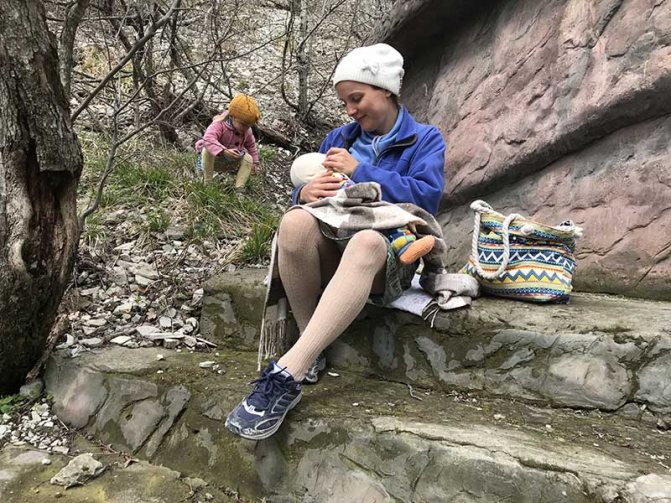
That's it. Without much jealousy. No loss. Without tugging, pills, leaving, putting off to another bed. We just loved it, but it passed. Thanks to my daughter for giving me this experience. Now I have a son. And I already know that I will try not to excommunicate him. Let him take as much as he needs. It's not much and it goes away. And I'll miss it.

